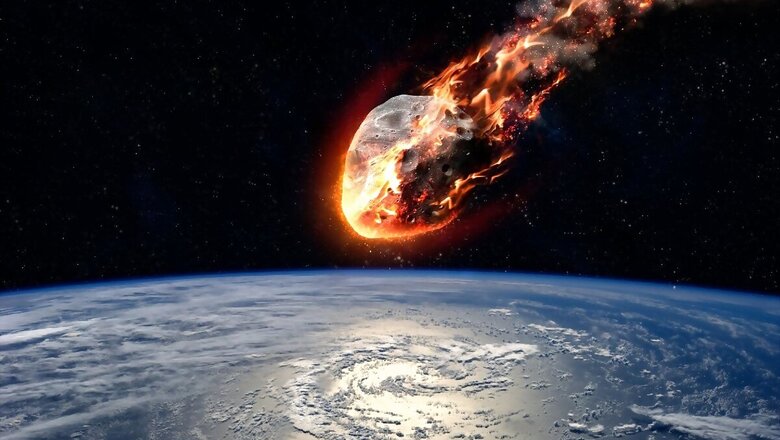
views
Asteroids are no rarity in space. Each month, a number of asteroids briskly fly past our planet at varying distances of intersection with the Earth’s orbit. As per norm, September too plays host to a number of these space rocks, with USA’s space agency NASA’s Centre for Near Earth Object Studies (CNEOS) revealing a total of seven such asteroids to be coming within close proximity of Earth. Of these seven, the most intriguing to note are three large asteroids, each of which are larger in diameter than the length of the average professional football pitch.
Asteroid 1: 2010 FR (270 metres)
The first big asteroid approaching Earth is as early as Sunday, September 6, and to make matters worse, it ticks all the checkboxes for being a potentially hazardous asteroid (PHA). Asteroid 465824 2010 FR will approach us Sunday, and its diameter is approximately 270 metres wide. In comparative terms, it is as large as twice the size of Giza’s biggest pyramids, and its magnitude scale of 21.7 also qualifies it within NASA’s scale of hazardous objects near Earth. The asteroid will fly past us at a distance of 7.41 million kilometres from Earth, which is more than 19x the distance between Earth and the moon.
Asteroid 2: 2020 QL2 (120 metres)
The second big asteroid approach to Earth will occur on September 14, as is a comparatively new discovery in terms of asteroid detection by researchers. Asteroid 2020 QL2 measures 120 metres in diameter – as big as the widest part of the average professional football pitch. Its magnitude scale of 23.5 on NASA’s CNEOS table puts it just beyond the scale of caution that potentially hazardous asteroids pose. 2020 QL2 is expected to fly past us at a distance of 6.84 million kilometres – almost 18x the distance between Earth and moon.
Asteroid 3: 2014 QJ33 (110 metres)
The third big asteroid also falls just outside the purview of NASA’s classification of PHAs, but it is the closest one of the lot. Asteroid 2014 QJ33 will fly past Earth on Thursday, September 17, and has peak diameter of 110 metres. It will come closest to Earth, at a distance of just 2.56 million kilometres from its closest intersection point with the Earth’s orbit. At just over 6x the distance between Earth and moon, it will be one of the closest big asteroid fly-bys of 2020. Thankfully, though, it still flies past us at a distance that can be deemed safe enough.



















Comments
0 comment